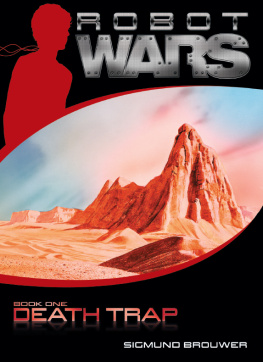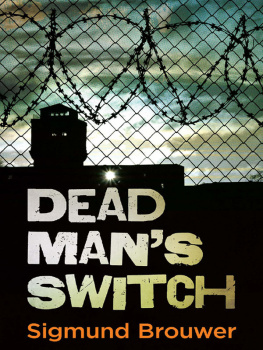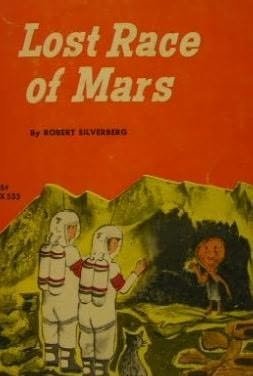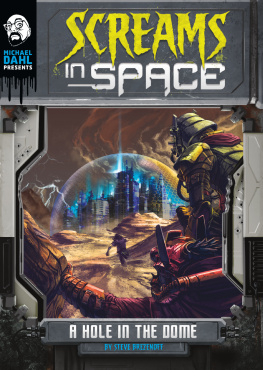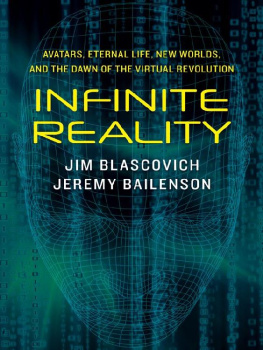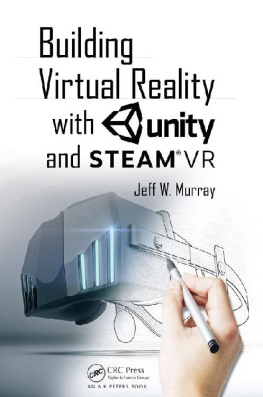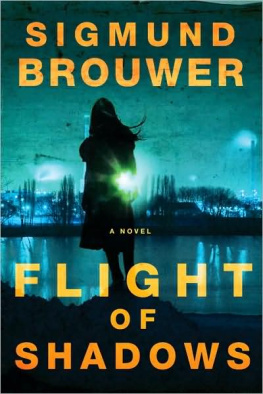Brouwer - Death Trap
Here you can read online Brouwer - Death Trap full text of the book (entire story) in english for free. Download pdf and epub, get meaning, cover and reviews about this ebook. year: 2012;2000, publisher: Tyndale House Publishers, Inc., genre: Science fiction. Description of the work, (preface) as well as reviews are available. Best literature library LitArk.com created for fans of good reading and offers a wide selection of genres:
Romance novel
Science fiction
Adventure
Detective
Science
History
Home and family
Prose
Art
Politics
Computer
Non-fiction
Religion
Business
Children
Humor
Choose a favorite category and find really read worthwhile books. Enjoy immersion in the world of imagination, feel the emotions of the characters or learn something new for yourself, make an fascinating discovery.
- Book:Death Trap
- Author:
- Publisher:Tyndale House Publishers, Inc.
- Genre:
- Year:2012;2000
- Rating:3 / 5
- Favourites:Add to favourites
- Your mark:
- 60
- 1
- 2
- 3
- 4
- 5
Death Trap: summary, description and annotation
We offer to read an annotation, description, summary or preface (depends on what the author of the book "Death Trap" wrote himself). If you haven't found the necessary information about the book — write in the comments, we will try to find it.
Brouwer: author's other books
Who wrote Death Trap? Find out the surname, the name of the author of the book and a list of all author's works by series.
Death Trap — read online for free the complete book (whole text) full work
Below is the text of the book, divided by pages. System saving the place of the last page read, allows you to conveniently read the book "Death Trap" online for free, without having to search again every time where you left off. Put a bookmark, and you can go to the page where you finished reading at any time.
Font size:
Interval:
Bookmark:
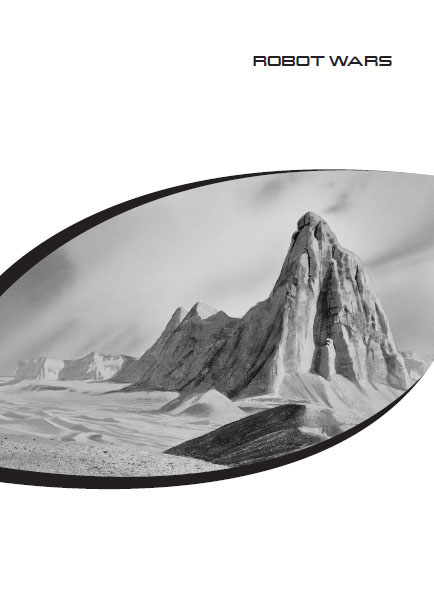

You can contact Sigmund Brouwer through his Web site at www.coolreading.com or www.whomadethemoon.com.
Visit Tyndales exciting Web site for kids at www.tyndale.com/kids.
TYNDALE and Tyndales quill logo are registered trademarks of Tyndale House Publishers, Inc.
Death Trap
Copyright 2000 by Sigmund Brouwer. All rights reserved.
Previously published as Mars Diaries Mission 1: Oxygen Level Zero and Mars Diaries Mission 2: Alien Pursuit under ISBNs 0-8423-4304-0 and 0-8423-4305-9.
Death Trap first published in 2009.
Cover photo illustration copyright by Corbis. All rights reserved.
Designed by Mark Anthony Lane II
This novel is a work of fiction. Names, characters, places, and incidents either are the product of the authors imagination or are used fictitiously. Any resemblance to actual events, locales, organizations, or persons living or dead is entirely coincidental and beyond the intent of either the author or the publisher.
For manufacturing information regarding this product, please call 1-800-323-9400.
Library of Congress Cataloging-in-Publication Data
Brouwer, Sigmund, date
Death trap / Sigmund Brouwer.
p. cm. (Robot wars)
Previously pub. in 2000 in two vols. under titles: Mars diaries, Mission 1, Oxygen level zero; and, Mars diaries, Mission 2, Alien pursuit.
ISBN 978-1-4143-2309-1 (softcover)
I. Title.
PZ7.B79984De 2009
| [Fic]dc22 | 2008028714 |
Printed in the United States of America
15 14 13 12 11 10
9 8 7 6 5 4
THIS SERIES IS DEDICATED IN MEMORY OF MARTYN GODFREY.
Martyn, you wrote books that reached all of us kids at heart. You wrote them because you really cared. We all miss you.
Table of Contents
FROM THE AUTHOR
We live in amazing times! When I first began writing these Mars journals, not even 40 years after our technology allowed us to put men on the moon, the concept of robot control was strictly something I daydreamed about when readers first met Tyce. Since then, science fiction has been science fact. Successful experiments have now been performed on monkeys who are able to use their brains to control robots halfway around the world!
Suddenly its not so far-fetched to believe that these adventures could happen for Tyce. Or for you. Or for your children.
With that in mind, I hope you enjoy stepping into a future that could really happen.
SIGMUND BROUWER
JOURNAL
ONE
Sandstorm!
Across the plains, the black shell of the gigantic dome gleamed in late-afternoon sunshine. It was beautiful against the red soil, laden with iron oxides, and the faded rose-colored Martian sky. From the bottom of the mountain where I stood, it took less than an hours trek across the plains to reach itin good weather.
But we would not get that hour. Sand rattled hard against my titanium casing, warning me of how little time remained. Much less than we needed.
I turned my head to the left, into the wind that raked the sand across me. A huge dark wall lifted from the north of the plains, a blanket of doom that covered more and more of the sky. Winds of near-hurricane force lifted tons of red sand particles. Already the front edge of the storm reached out to us. In less than half an hour, those tons of sand would begin to cover me and the three scientists I had been sent out of the dome to find.
Home base, I called into my radio. This is Rescue Force One. Please make contact. Home base. This is Rescue Force One. Please make contact.
There was no answer. Just like there had been no answer the other hundred times Id tried in the last half hour.
A solar flare must have knocked out the satellite beam. The sun was about 140 million miles away, so weak and so far from Mars that on winter nights, the temperature here dropped to minus 200 degrees Fahrenheit. Yet all it took was a storm on the surface of the sun to fire out electromagnetic streams nearing the speed of light, and communication systems through the entire solar system would pay the price.
Home base, I said. This is Rescue Force One. Please make contact.
One of the scientists walked in front of me, blocking my view of the base. He leaned down and pushed his helmet visor into my forward video lens. What are we going to do? he shouted.
He did not have to shout. I could hear him clearly. Nor did he have to walk around in front of me. I could have seen him just as easily with my rear video lens. Or one of my side lenses.
Forward, I said. We cannot stop.
No! We must make shelter.
Did he think I had not thought of this already? Standard procedure in dealing with a sandstorm was to go to high ground, unfold an emergency pop-up blanket, and crawl beneath it. The pop-up blanket made a miniature dome that would easily provide shelter for as many days as it took the storm to pass. But fools who used the pop-up blanket on low ground would be buried by the sand, never to be found again.
Forward, I said. Follow me.
Thats easy for you! he hollered. Youre just a stupid machine!
He was correct both times. It would be easy for me to travel in a sandstorm, and I was just a machine. But he was also wrong. I was more than a machine. And I was not stupid. I knew plenty.
I knew that during each Martian fall and winter, the carbon dioxide gas in the atmosphere froze out of the air and onto the ground, making a giant hood of frost that covered from the pole to the equator. I knew that as spring arrived, the difference in temperatures between the sun-warmed soil and the retreating ice made for fierce winds. I knew these strong winds were so monstrous that sometimes sandstorms covered the entire planet. I knew if we took shelter, we might be trapped for days.
I also knew that the last scientist had only 10 hours of oxygen left in his tank. If we took shelter, he would die long before the storm ended.
One of you will die if we stop, I said. If we continue, all of you will survive.
Well get lost in the storm! No one survives a sandstorm.
No, I insisted. My navigation system is intact. We will link ourselves by cable, and I will maintain direction. All you need to do is follow.
No! he yelled. Not through a sandstorm!
Listen, I said, if we stop, he has no chance.
Should three of us die instead of one? The scientist picked up a rock and tried to smash it against my head. But since he wore a big atmosphere suit and was very slow, I moved out of the way easily.
He picked up another rock and threw it at me. I put up my arms to protect my video lenses, and the rock clanged off my elbows.
The other two scientists watched, doing nothing. They were very tired. I had rescued them from the bottom of a giant sinkhole where they had been stranded for two days.
The first scientist picked up another rock to throw. It was a big rock. Even though his suit made him clumsy, he would be able to throw it hard. Mars has very little gravity compared to Earth. A person throwing a rock the size of a grapefruit on Earth could easily throw a rock the size of a basketball on Mars.
What was I going to do? If I let the scientist with the rocks force us to stop and put up a shelter, one of them would die. But if I grabbed the scientist with the rock in my sharp metal claws, I would most certainly poke a hole in his space suit. With an atmosphere of 95 percent carbon dioxide, he would die within minutes.
Next pageFont size:
Interval:
Bookmark:
Similar books «Death Trap»
Look at similar books to Death Trap. We have selected literature similar in name and meaning in the hope of providing readers with more options to find new, interesting, not yet read works.
Discussion, reviews of the book Death Trap and just readers' own opinions. Leave your comments, write what you think about the work, its meaning or the main characters. Specify what exactly you liked and what you didn't like, and why you think so.

